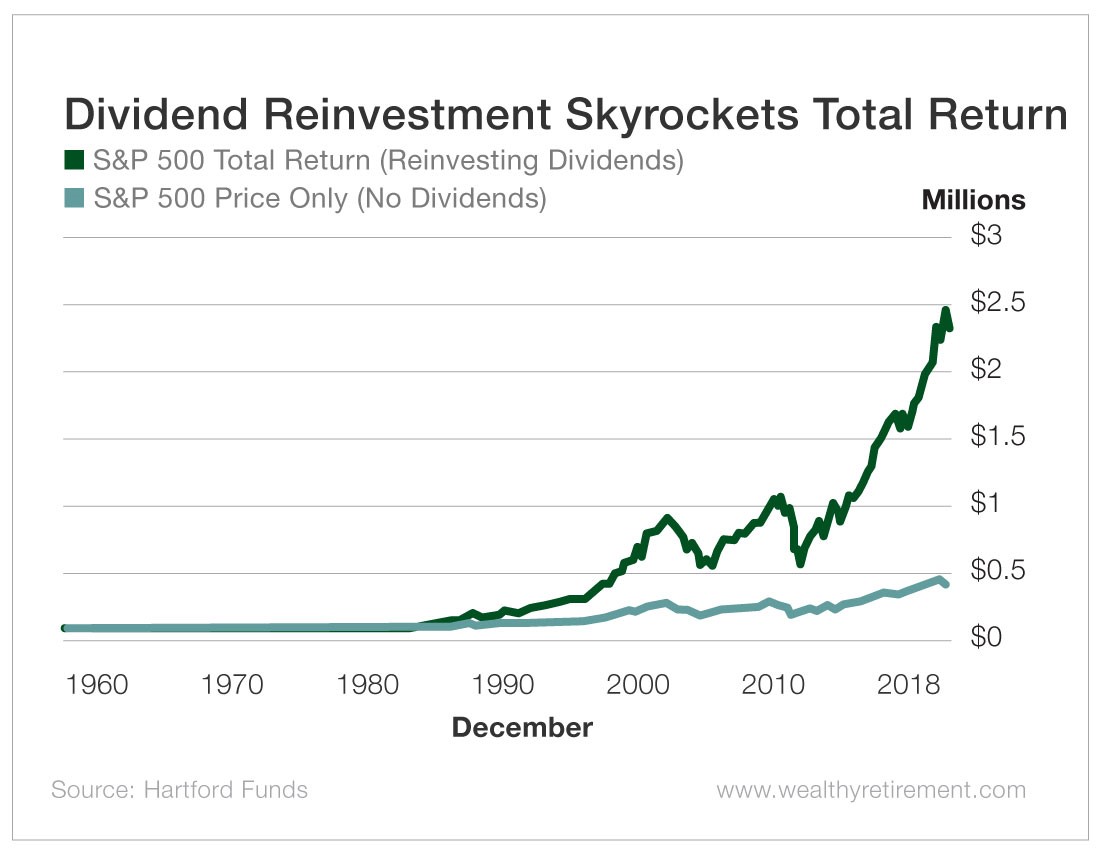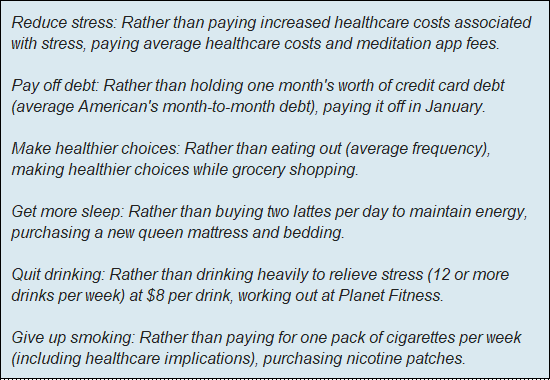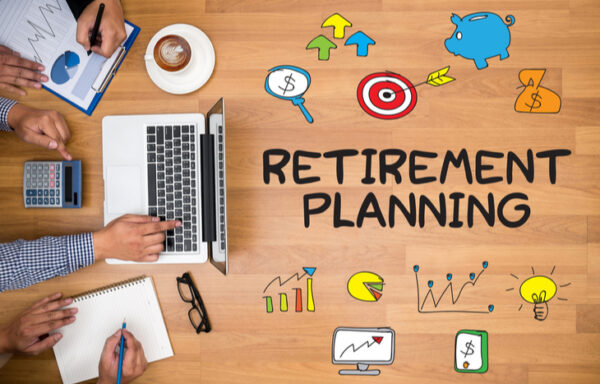Your First Investment of 2020
I’m sure you’ve heard it all before…
Pessimistic studies quote the worst: Only 8% of people achieve their New Year’s resolutions.
They’re not very encouraging.
And it’s especially hard to make headwind when you’re discouraged before you even begin.
For example, GOBankingRates reports that getting in shape could run you a hefty $125 per session to hire a personal trainer.
It fails to mention that staying in shape in retirement can help you avoid some of the most expensive and frightening medical emergencies seniors face today.
Which costs more – $55 per month for yoga to improve your balance and mobility, or outrageous hospital fees and physical therapy (and lifestyle changes) for injuries and complications due to a fall?
Often, in our efforts to “get the best deal” on our January convictions, we overlook how much it will cost us to not go after our goals.
Consider the following chart, for example.
Shelling out for nicotine patches seems less expensive when a single pack of cigarettes – plus the healthcare implications it comes with – costs $40, according to the American Cancer Society.
With this mind, a $180 12-week supply of patches looks like a steal compared with the $480 you’d spend (factoring in future healthcare costs) smoking just one pack of cigarettes each of those weeks.
Or take an even more common New Year’s resolution: healthy eating, which gets a bad reputation for being expensive.
The real math may surprise you…
It costs $1.50 more daily to make healthier eating choices, according to a study published by the Harvard T.H. Chan School of Public Health. (And it’s true – this does add up.)
But that extra $1.50 per day to get fresh produce – or simply spring for whole-grain breads and cereals – looks small compared with the $24 the average person spends on eating out per day.
It may be easy to feel guilty for spending money on self-improvement after the notoriously expensive holidays – but resist the temptation.
Instead, consider your New Year’s resolution your first investment of 2020.
Your $13 per month meditation program subscription could have a financial benefit when it comes to your productivity – but even if it doesn’t, the physical and mental health benefits of managing stress and anxiety are unmeasurable.
Maybe your $4 latte is a way for you to connect with friends. Social connections are one of the most critical needs we have, especially in retirement – so there’s no shame in taking time to catch up with someone whose company you enjoy.
Of course, it’s important to stick to a budget. (And making one can be a great New Year’s resolution!)
But also think carefully about what you can do to have a more productive, healthier (and, equally important, happier) 2020.
When you really do the math, you’ll see there’s no shame in redefining what constitutes a necessary expense. Your first investment in the new year will pay dividends for months to come.
[adzerk-get-ad zone="245143" size="4"]






